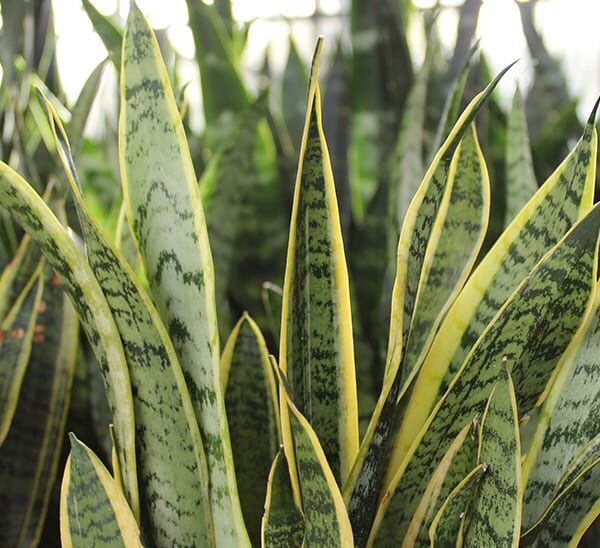Snake Plant (Sansevieria)
Snake Plant (Sansevieria)
$19.99
Enhance your home with the effortless elegance of Sansevieria, also known as the Snake Plant or Mother-in-Law’s Tongue. With its striking sword-shaped leaves that can grow up to 6 feet tall, Sansevieria is a popular and easy-to-care-for houseplant that is ideal for adding a touch of greenery to any room.
Items For Added Success
Species: trifasciata
Plant Height: 4-48 in.
Spread: 10-36 in.
Evergreen: Yes
Plant Form: Upright
Minimum Sunlight: Indirect
Maximum Sunlight: Indirect
Sansevieria is a popular ornamental plant with its upright habit and various shades of green, adding color and texture to indoor living spaces. This plant is also known best for its air purifying qualities.
Sansevieria can be used as an accent potted plant, or a stand-alone feature in interior spaces with indirect light. Sansevieria use the crassulacean acid metabolism process; absorbing carbon dioxide and releasing oxygen.
Sansevieria is an evergreen perennial plant that forms dense stands, with the leaves growing vertically. The coloring is usually lighter in the center of the leaves. Mature leaves can grow into a dark green. Sansevieria can grow up to 48 inches with a spread of 36 inches. This is a low maintenance plant, easy to care for, and tolerating low light. Watering may be infrequent – let the soil dry between watering. During the winter, watering may be reduced further. Sansevieria does best in loose, well-drained potting soil.
How to Care for Snake Plant (Sansevieria)
Snake Plants grow best in bright, indirect sunlight but are highly adaptable. They tolerate low-light conditions, making them ideal for homes and offices. Avoid long exposure to harsh, direct sunlight, which can scorch their leaves. A mix of filtered light or gentle morning sun works best for healthy growth.
Snake Plants prefer well-draining, sandy soil similar to cactus or succulent mixes. A blend containing perlite or coarse sand helps prevent root rot. Avoid heavy, compacted soils that retain water—good drainage is essential for keeping the roots healthy.
Water sparingly. Let the soil dry out completely between waterings, usually every 2–3 weeks in warmer months and less in winter. Overwatering is the most common mistake; Snake Plants store water in their thick leaves and are more tolerant of drought than soggy soil.
Water your Snake Plant only when the top 1–2 inches of soil feel dry. Typically, this means every 2–3 weeks in warmer months and less frequently in winter. Overwatering is the most common mistake—Snake Plants store water in their leaves, so they tolerate drought much better than soggy soil.
Feed your Snake Plant with a balanced, low-nitrogen fertilizer (such as 10-10-10) diluted to half strength. Apply once a month during the growing season (spring and summer). Skip fertilizing in fall and winter when the plant’s growth slows naturally.
Pruning is simple—remove damaged, yellow, or overgrown leaves at the base using clean, sharp shears. You can also cut back taller leaves to shape the plant or encourage new growth. Pruning helps maintain a tidy appearance and promotes healthy, upright foliage.
Snake Plants are hardy but can occasionally attract spider mites, mealybugs, or fungus gnats. Overwatering may lead to root rot or leaf spotting. Wipe leaves with a damp cloth, use well-drained soil, and avoid excess moisture to prevent most issues.
No—Snake Plants are not frost-tolerant. They prefer temperatures between 65°F and 85°F and should be kept indoors or protected from cold drafts. Prolonged exposure below 50°F can damage the leaves and stunt growth.
